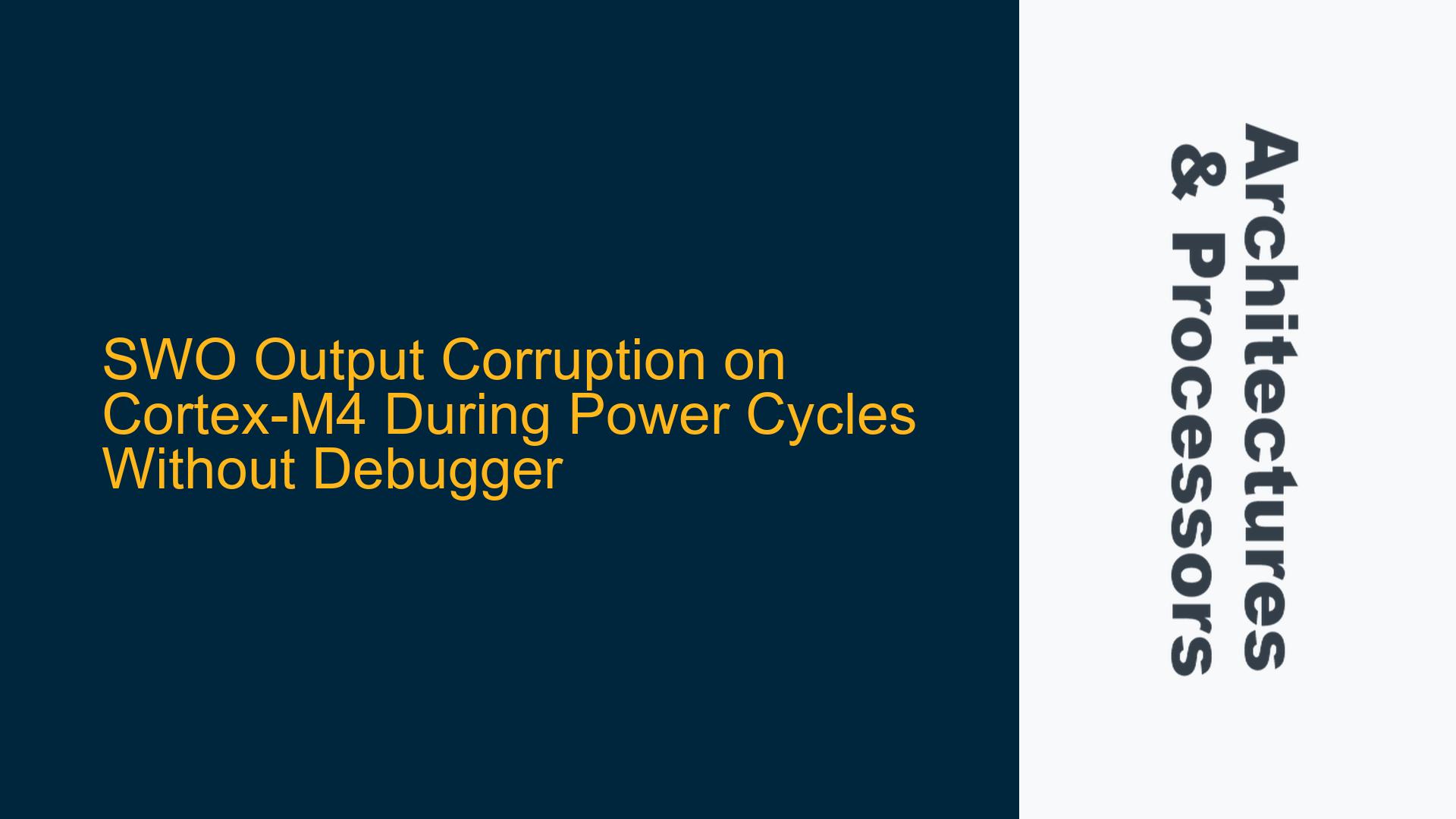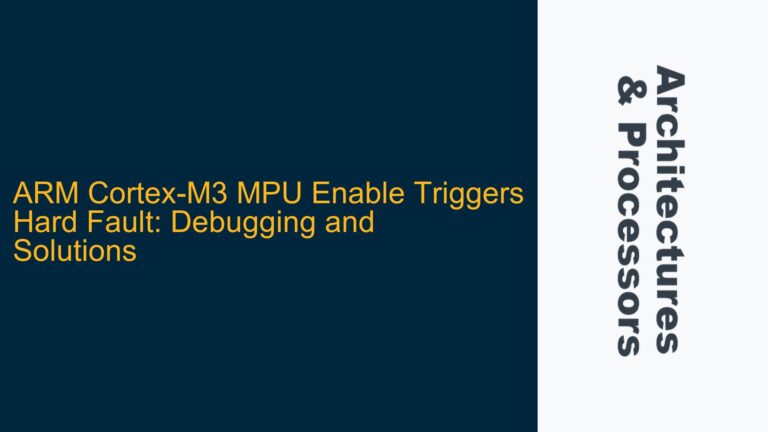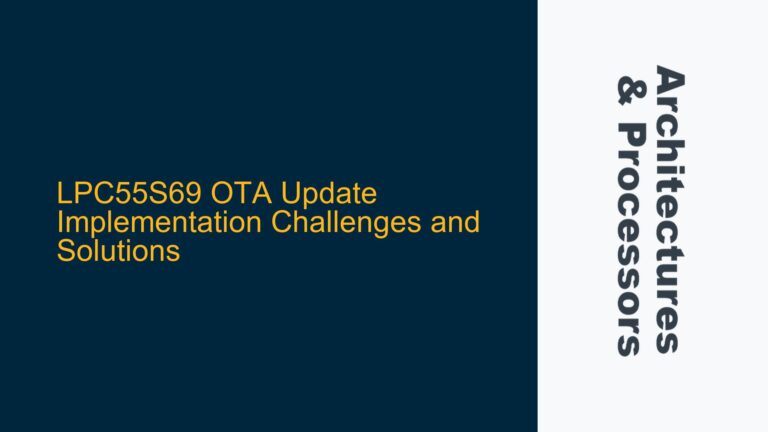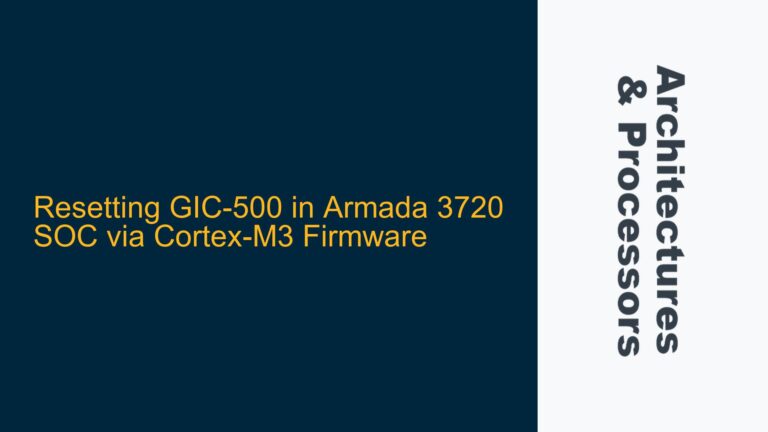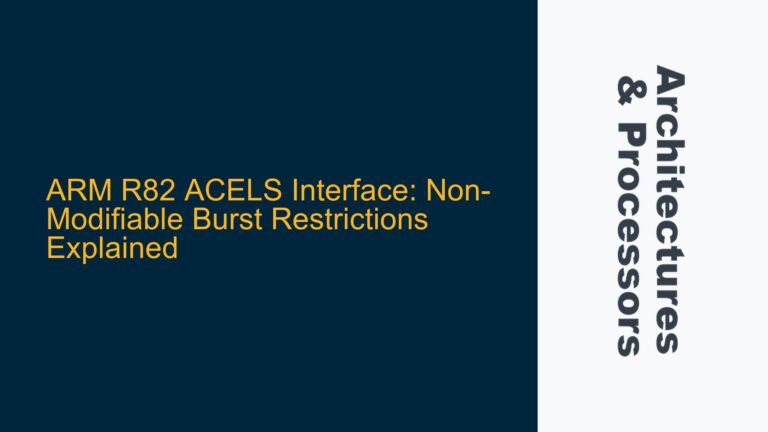SWO Output Corruption in Cortex-M4 During Power Cycles Without Debugger
The issue at hand involves the corruption of SWO (Single Wire Output) debug output on an ARM Cortex-M4 processor, specifically the nRF52832, when the device is power-cycled without an active debugger connection. The SWO output functions correctly immediately after programming but exhibits intermittent corruption after power cycling. This problem is particularly pronounced when the device enters low-power modes, such as sleep, without an active debugger connection. The corruption is attributed to the core transitioning into a low-power state before the ITM (Instrumentation Trace Macrocell) and TPIU (Trace Port Interface Unit) have flushed all pending data, leading to clock gating or changes that disrupt the data stream.
The SWO is configured to output debug information at a specific baud rate, and the setup code initializes the necessary registers for SWO operation, including the ITM and DWT (Data Watchpoint and Trace) registers. However, the corruption occurs when the device is power-cycled without the debugger connected, and the core enters a low-power mode. This behavior is not observed when the debugger is active, as the core does not enter deep sleep in this scenario.
The key observation is that the C_DEBUGEN bit in the CoreDebug registers is set when the SWO output is reliable and clear when it is not. This bit is only accessible through the DAP (Debug Access Port), making it difficult to manipulate programmatically. The corruption is exacerbated when the core enters a low-power state, such as sleep, without an active debugger connection, as the ITM/TPIU data is not fully flushed before the core transitions, leading to mangled data streams.
Clock Gating and Low-Power Mode Transitions Without Debugger
The root cause of the SWO output corruption lies in the interaction between the Cortex-M4 core’s low-power modes and the ITM/TPIU’s data flushing mechanism. When the debugger is not connected, the core is free to enter true low-power modes, such as sleep or deep sleep, in response to sleep events. During these transitions, the clock gating or changes associated with low-power modes can disrupt the ITM/TPIU’s ability to flush pending data, leading to corruption in the SWO output.
The C_DEBUGEN bit plays a critical role in this scenario. When the debugger is connected, this bit is set, preventing the core from entering deep sleep and ensuring that the ITM/TPIU can flush all pending data before any clock gating occurs. However, when the debugger is disconnected, the C_DEBUGEN bit is cleared, allowing the core to enter low-power modes. If the core transitions to sleep before the ITM/TPIU has flushed all data, the resulting clock gating or changes can corrupt the data stream.
The issue is further compounded by the lack of suitable flags to hold off the WFE (Wait For Event) instruction. While the ITM provides flags such as ITM busy and FIFO available, these are not sufficient to ensure that all data has been flushed before the core enters a low-power state. This limitation makes it challenging to prevent the corruption without an active debugger connection.
Implementing Data Flush Mechanisms and Debugger Emulation
To address the SWO output corruption, several strategies can be employed to ensure that the ITM/TPIU data is fully flushed before the core enters a low-power state. One approach is to implement a data flush mechanism that waits for the ITM/TPIU to complete its operations before allowing the core to transition to sleep. This can be achieved by polling the ITM and TPIU status registers to ensure that all data has been transmitted before executing the WFE instruction.
Another approach is to emulate the behavior of the debugger by setting the C_DEBUGEN bit programmatically. While this bit is typically only accessible through the DAP, it may be possible to manipulate it using custom debugger scripts or by leveraging hardware-specific features. By setting the C_DEBUGEN bit, the core can be prevented from entering deep sleep, ensuring that the ITM/TPIU can flush all data before any clock gating occurs.
Additionally, the use of data synchronization barriers (DSB) and cache management instructions can help ensure that all pending data is flushed before the core enters a low-power state. These instructions can be inserted before the WFE instruction to ensure that all data in the ITM/TPIU has been transmitted. For example, the following code snippet demonstrates the use of a DSB instruction to ensure data synchronization:
__DSB(); // Ensure all data is flushed before entering sleep
__WFE(); // Wait for event
Furthermore, the SWO initialization code can be modified to include additional checks and delays to ensure that the ITM/TPIU is ready before allowing the core to enter a low-power state. For example, the following code snippet demonstrates the use of a delay loop to ensure that the ITM is ready:
void SWO_Init(void) {
uint32_t SWOSpeed = 57600; // default baud rate
uint32_t SWOPrescaler = (CPU_CORE_FREQUENCY_HZ / SWOSpeed) + 1; // SWOSpeed in Hz,
CoreDebug->DEMCR = CoreDebug_DEMCR_TRCENA_Msk; // enable trace in core debug
*((volatile unsigned *)(ITM_BASE + 0x400F0)) = 0x00000002; // "Selected PIN Protocol Register"
*((volatile unsigned *)(ITM_BASE + 0x40010)) = SWOPrescaler; // "Async Clock Prescaler Register"
*((volatile unsigned *)(ITM_BASE + 0x00FB0)) = 0xC5ACCE55; // ITM Lock Access Register
ITM->TCR = ITM_TCR_TraceBusID_Msk | ITM_TCR_SWOENA_Msk | ITM_TCR_SYNCENA_Msk | ITM_TCR_ITMENA_Msk; // ITM Trace Control Register
ITM->TPR = ITM_TPR_PRIVMASK_Msk; // ITM Trace Privilege Register
ITM->TER = 1; // ITM Trace Enable Register
*((volatile unsigned *)(ITM_BASE + 0x01000)) = 0x400003FE; // DWT_CTRL
*((volatile unsigned *)(ITM_BASE + 0x40304)) = 0x00000100; // Formatter and Flush Control Register
// Wait for ITM to be ready
while ((ITM->TCR & ITM_TCR_ITMENA_Msk) == 0) {
// Wait until ITM is enabled
}
}
In conclusion, the SWO output corruption on the Cortex-M4 during power cycles without a debugger is primarily caused by the core entering low-power modes before the ITM/TPIU has flushed all pending data. By implementing data flush mechanisms, emulating debugger behavior, and using data synchronization barriers, it is possible to mitigate this issue and ensure reliable SWO output even without an active debugger connection.
